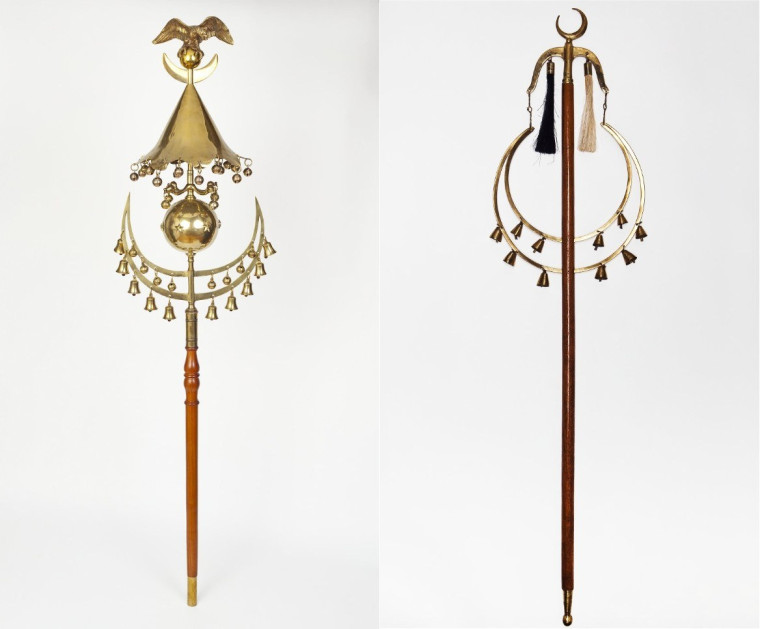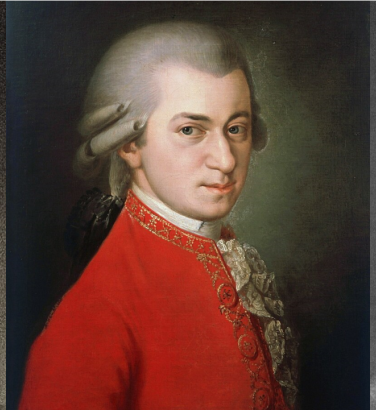
An introduction to Janissary music
11 Dec 2023
News Story
A 1907 illustration of a Janissary band. From left to right, the instruments shown are the davul (equivalent to the bass drum), halile (cymbals), boru (a form of trumpet particular to Turkey), zurna (a double-reed instrument related to the oboe) and cevgen (or jingling Johnny).
What do Mozart’s opera Die Entführung aus dem Serail, Haydn’s MilitarySymphony (No 100 in G) and Beethoven’s Choral Symphony have in common?
They all feature a barrage of what was then termed Turkish percussion: triangle, cymbals and bass drum, intended to evoke the exotic sound of the bands attached to the Janissaries, elite infantry corps in the Ottoman army. The woodwind and brass instruments in these ensembles had their equivalents in western European culture, but by and large, composers were even more interested in emulating the bangs and crashes of their percussion instruments, which included a vast array of drums, cymbals and the cevgen.
The last of these was a wooden pole adorned with brass decorations, among them crosspieces in the shape of a crescent and any number of bells, capped with a conical ornament. It is believed to have its origin in central Asia, from which it spread to China (hence its French name of chapeau or pavillon chinois), Indonesia, Africa, various parts of Europe and even Argentina. Its German and English names, Schellenbaum (literally, ringing tree) and jingling Johnny respectively, illustrate the most common method of playing the instrument, namely by holding it upright and shaking it.

A pair of jingling Johnnies, part of the University of Edinburgh's Musical Instrument Collection currently on display at St Cecilia's Hall(photos by permission). Left to right: probably French (MIMEd 6110) and Turkey, 20th century (MIMEd 3443).
If it seems a little strange to substitute a triangle for the more visually arresting jingling Johnny, that is probably a reflection of practical considerations. As impressive as the latter may look, it is hardly a compact instrument, nor anywhere near as affordable as the humble triangle.
Music reminiscent of the Janissary bands became especially fashionable in 1770s Austria, almost a century after the Ottoman empire had last posed any kind of threat to European countries from Poland to Hungary: the failed siege of Vienna in 1683 had been its last hurrah. With the conflict no longer in living memory, an approximation of the enemy’s percussive arsenal could be considered piquantly exotic. As such, in the explicitly Turkish setting of Die Entführung, the additional percussion serves mainly to colour the orchestration, amplifying the otherness of the Turkish characters. When it comes to Osmin, overseer of the Pasha’s estate, it is used primarily to comic effect: as a representation of his bad temper, the threat he poses is considerably reduced.
When it comes to Haydn's Military symphony, it is entirely possible that it would have been named the Turkish had he written it for an Austrian audience. As one of his late symphonies written for London in the 1790s, the extra percussion may not have held any such specific association - though in the aftermath of the French revolution (and with the Napoleonic Wars yet to come), the music's martial qualities were certainly not lost on its audiences. Their introduction in the slow movement immediately establishes the strains of a march, but their return at the end of the symphony shows Haydn in crowd-pleasing mode. There is a distinct sense of Turkish percussion having been reduced to pure entertainment.
Moving on another two decades, when Beethoven came to write his last symphony, this recreation of the Janissary sound was not so much passé as a historical curiosity. In fairness, any percussion beyond timpani was still very unusual in orchestral music at the time: even Berlioz, among the most startlingly original composers of any age, relied on them to replicate the sound of distant thunder in his 1830 Symphonie fantastique. As in the Military symphony, Beethoven initially reserves the three instruments for a military context, when the ‘Ode to Joy’ theme is transformed into a march for a tenor aria with male chorus. The mood is too jubilant for there to be any threatening undertones, and this remains the case when they reappear in the final section of the symphony.
The hellish roar of war increased to a climax of horrid sublimity!
Mozart’s Violin Concerto No 5, nicknamed the Turkish (and included in our Rhythms of Eastern Europe concerts in January 2024), stands slightly apart from all these: the piece is scored for much more modest forces, with no percussion at all. As such, Mozart has to flex his creative muscles to recreate the sound of the Janissary bands. The section of the final movement which gives the work its name has the soloist playing a decidedly jagged figure, underscored by stark harmonies in the orchestra played in rhythms characteristic of the Turkish sound.
Anything beyond this is really at the conductor’s discretion. When Alina Ibragimova played the concerto at the Elbphilharmonie in Hamburg this summer with the SCO under Maxim Emelyanychev, for instance, the conductor’s and soloist’s heels provided the implied percussion. A more typical approach lies in the cellos and double basses making the most of their music in this section: marked to be played coll' arco al roverscio (what would now be termed con legno, i.e. with the wood of the bow rather than the horsehair), it's this unusual sound that really makes the character of this so-called Turkish episode.
Had the Ottoman empire not been the aggressor, and the countries it threatened taken revenge by occupying its territories following its defeat, the popularity of a Turkish style of music in Austria could be regarded as cultural appropriation today. Given that it came about so long after the event, there was probably little chance of any authenticity in a European recreation of the Janissary sound. Already at a safe remove from the realities of the conflict then, it is even more divorced from its original context now. The surviving works to use it do so sparingly and in such a spirit of fun that audiences are invariably left grinning with pleasure.
Related Stories
![Three men, the first two in 18th century formal dress (one in black and white, one in a red coat), the last in an old photo, smoking]()
What is a sinfonia concertante?
17 March 2025
We delve into the history of a hybrid genre ...![]()
The SCO Chorus on music for Lent
10 March 2025
With Easter just around the corner, we delve into perhaps the richest (and often darkest) choral repertoire of all ...![]()
The bassoon concerto
3 March 2025
For the last article in our concerto series (for now), we turn to an instrument too often dismissed as the orchestra's resident joker.


